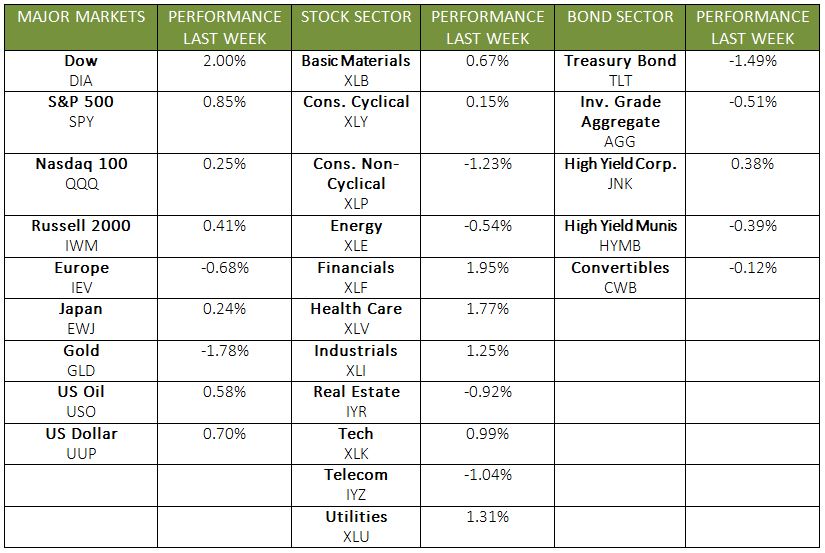
The Weekly Update
Week of October 23, 2017
By Christopher T. Much, CFP®, AIF®

Last week, all 3 major U.S. markets hit record highs once again. The Dow added 2.00% to notch both intraday and closing records, the S&P 500 rose 0.86%, and the NASDAQ gained 0.35%. International stocks in the MSCI EAFE dipped by 0.32% for the week.
On Thursday evening, the senate passed the blueprint for a $4 trillion budget. The vote sets the stage for a tax overhaul that could lower taxes for many families and businesses. In addition, some investors believe the promise of tax cuts could push market valuations even higher.
Other investors, however, have expressed concern about the continuing market highs. Although the economy is growing and corporate earnings are up, they fear a potential market correction.
Against this backdrop, last week marked a key milestone in financial history: the 30th anniversary of Black Monday – the largest single-day market percentage drop in history. Remembering the over 22% loss the Dow experienced that day, some investors may worry about whether the same type of precipitous drop is possible today.
Why Today Is Different
In the wake of the 1987 crash, regulators implemented a series of “circuit breakers” to avoid anxiety-induced sell-offs. These rules required a pause in trading if the Dow dropped by 10, 20, or 30%. Since implementing the circuit breakers, only one market-wide pause has occurred – in 1997.
Over the years, regulators have updated the circuit breakers and connected them to S&P 500 performance rather than the Dow. But their function remains the same: to allow time to help understand and react coolly to dramatic market declines. These rules help prevent unnecessary fear and instability from taking over the markets.
Putting Performance in Perspective
While the recent market performance is impressive, it is not unprecedented. Hitting record highs doesn’t have to mean that a correction is ahead. In fact, a year after reaching a new peak, the S&P 500 has had positive growth 72% of the time. Rather than allowing fear or euphoria to drive choices, focusing on data and strategy remains important in every market.
Looking ahead, this week will give us a clearer picture of our economic growth as the first readings of third quarter GDP come out on Friday. Many economists are predicting that the data will show another quarter of strong growth.
We encourage you to contact us if you have any questions about how market highs may affect your portfolio or long-term strategy. We are here to focus on your financial goals and investments, so you can focus on what truly matters to you.
ECONOMIC CALENDAR
Tuesday: PMI Composite Flash
Wednesday: Durable Goods Orders, FHFA House Price Index, New Home Sales
Thursday: Jobless Claims, Pending Home Sales Index
Friday: GDP, Consumer Sentiment


